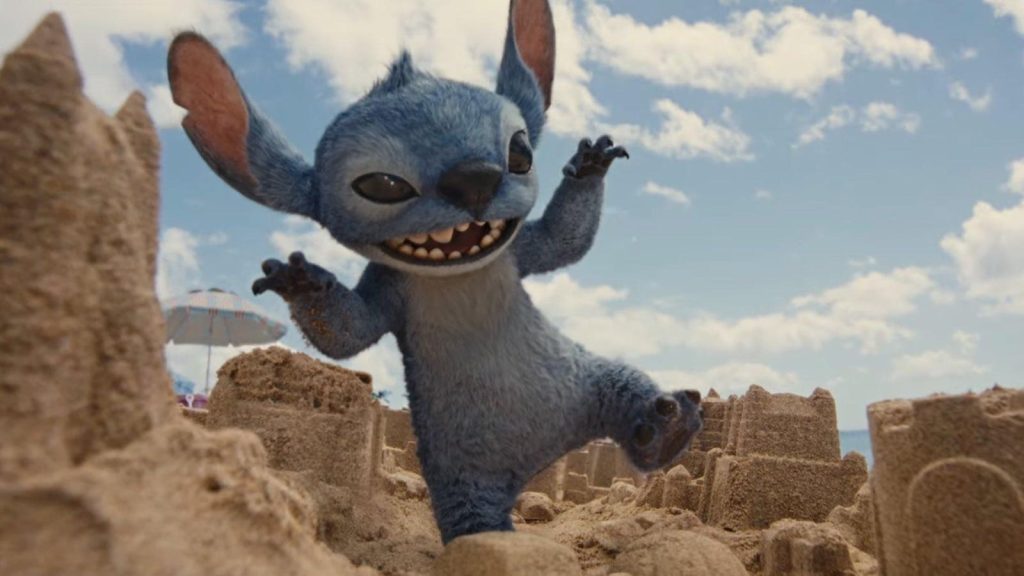Disney’s live-action remake of ‘Lilo & Stitch’
Disney
Viewers have something of a love-hate relationship with Disney’s slate of live-action remakes, which are often criticized for failing to live up to the original animated films, yet sometimes proving very popular at the box office.
The original Lilo & Stitch was a modest success, grossing $273 million worldwide, but fans look back on the film fondly—it’s beautifully animated, boasts unique character design, a good sense of humor, and depicts Hawaii as a lush, colorful paradise.
While the new Lilo & Stitch has already overtaken the original film at the box office, commentators have pointed out that the live-action remake doesn’t capture the beauty and heart of the animated film.
Plus, a significant change made to the ending of the film has sparked backlash and controversy on social media.
What Happens In Disney’s ‘Lilo & Stitch’?
Lilo & Stitch depicts Lilo and her sister Nani in a difficult, but very loving relationship—the two are orphaned and Nani is tasked with taking care of her little sister.
Nani is the only one who understands Lilo’s eccentricity, but Nani is overstretched and struggles to care for her little sister, resulting in the state threatening to take Lilo away from Nani.
Of course, the sister’s lives face greater disruption when the alien Stitch enters their lives disguised as a dog, sabotaging Nani’s desperate attempts to get her life in order.
The story emphasizes the importance of “Ohana,” meaning family that binds beyond traditional blood ties.
The original animated film grants Lilo’s family a happy-ever-after, ending with Nani, Lilo and Stitch finding peace together, bolstered by a new support system of aliens and humans.
The live-action remake, however, has a different interpretation of Ohana.
Spoilers Ahead
Disney’s Live-Action ‘Lilo & Stitch’ Ending Proves Controversial
In the live-action remake of Lilo & Stitch, Nani (Sydney Agudong) and Lilo (Maia Kealoha) are in the exact same situation, but the film ends with the state taking Lilo away from her big sister.
Fans of the original film were quite shocked to see the change.
For context, this change is presented as an unambiguously happy ending for Nani, as a new character is introduced, Tūtū (Amy Hill), a grandmotherly neighbour who adopts Lilo.
This ensures that Nani can still see Lilo regularly and remain close, but also gives her the freedom to leave for college in California to study marine biology.
However, fans pointed out that there was something dark about Nani’s future career being placed above her care of Lilo, a strangely cold ending with a glossy, “girlboss” spin.
Lilo hasn’t gone away, exactly, but the two no longer live together, and Nani is no longer taking care of her sister.
Given that the original film (and the remake) very much emphasizes the importance of keeping families together with the phrase “no one gets left behind,” this struck many viewers as a cold attempt at a happy ending.
Indeed, given the terrible history of indigenous children being torn away from their families, many pointed out that the creative choice came across as wildly insensitive. The outcry was so strong, it even inspired satirical fan art.
Others wondered why Nani couldn’t simply study marine biology in Hawaii.
Some speculated that the change was made to give the film a newfound sense of realism.
Whatever the reasoning behind the change, the result is that the theme of the story shifts to a more individualistic message.
During the ending of the live-action Lilo & Stitch, the phrase “nobody gets left behind” is countered by Tūtū, who tells Nani, “don’t leave yourself behind.”
MORE FROM FORBES

